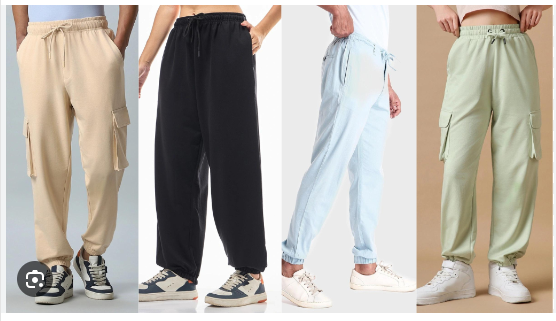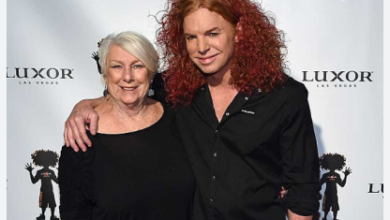Title: Understanding Different Types of Pants and Distribution Lawsuits

Types of Pants fundamental part of fashion and everyday life. From casual jeans to formal trousers, the variety of pants available today is immense. But beyond the fashion and utility aspects, there’s an interesting legal side to the clothing industry, particularly regarding distribution lawsuits. Companies face various legal challenges when distributing pants and other clothing items, from trademark disputes to contract breaches.
In this article, we’ll explore different types of pants, their significance, and the legal complications that can arise in their distribution. Whether you’re a fashion enthusiast or someone interested in business law, this guide will provide a detailed look into both worlds.
Common Types of Pants and Their Uses
1. Jeans
Jeans are arguably the most popular type of pants worldwide. Originally designed as workwear, jeans have evolved into a fashion staple. They come in various styles, including skinny, bootcut, and relaxed fit, making them versatile for different occasions.
Brands like Levi’s, Wrangler, and Diesel have set the standard for quality denim. Their durability and comfort make them a go-to choice for casual wear, while designer variations allow them to be dressed up for semi-formal occasions.
However, the mass production and distribution of jeans have sometimes led to legal battles over patents, copyrights, and trademark disputes. These issues can arise when a company creates designs that resemble another brand’s signature style.
2. Chinos
Chinos offer a balance between formal and casual wear. Made from lightweight cotton or cotton-blend fabric, chinos are perfect for a business-casual look. They are often found in neutral colors like beige, navy, and olive.
Chinos gained popularity due to their comfort and versatility. They are an excellent alternative to jeans when a slightly more refined look is needed. Various brands have introduced different cuts and fits to cater to diverse consumer preferences.
From a business perspective, chinos have been at the center of some distribution lawsuits when companies fail to meet contract obligations or when counterfeit products flood the market.
3. Sweatpants
Sweatpants are designed for comfort and relaxation. Originally meant for athletes and gym-goers, they have become a mainstream fashion statement. Thanks to athleisure trends, sweatpants are now seen in both casual and semi-stylish settings.
With high demand, major brands like Nike, Adidas, and Lululemon face challenges such as counterfeit products and unauthorized distributions. Lawsuits often emerge when third-party distributors sell fake or unauthorized versions of these popular brands.
4. Cargo Pants
Cargo pants were initially designed for military use due to their durability and multiple pockets. Over time, they have become popular for outdoor activities and casual fashion. Their loose fit and sturdy fabric make them a favorite among travelers and hikers.
One of the biggest legal issues surrounding cargo pants involves intellectual property disputes. Some brands have patented specific pocket placements and designs, leading to lawsuits when competitors release similar versions.
5. Dress Pants
Dress pants are a staple in professional and formal settings. Made from high-quality fabrics like wool, polyester blends, or linen, they offer a polished look suitable for business meetings and formal events.
The manufacturing and distribution of dress pants often involve agreements with retailers. When these agreements are breached—such as late deliveries or failure to meet quality standards—lawsuits may arise, leading to financial and reputational damage.
The Legal Side: Distribution Lawsuits in the Fashion Industry
1. What is a Distribution Lawsuit?
A distribution lawsuit occurs when a dispute arises between manufacturers, wholesalers, and retailers regarding the supply chain process. These lawsuits can involve issues such as breach of contract, counterfeit products, or intellectual property infringement.
Fashion brands, especially those selling pants, frequently encounter distribution challenges due to the competitive nature of the industry. Understanding these lawsuits is crucial for businesses to protect their brand reputation and financial interests.
2. Common Causes of Distribution Lawsuits
a) Breach of Contract
When companies sign agreements for product distribution, they outline specific terms, such as delivery deadlines, payment schedules, and product exclusivity. If one party fails to meet these terms, the other party may file a lawsuit.
For example, a brand producing dress pants may have an exclusive agreement with a particular retailer. If the retailer starts selling similar pants from a competitor, the original brand could take legal action.
b) Counterfeit Products
Fake products are a massive issue in the clothing industry. Popular brands producing jeans, sweatpants, or dress pants often see counterfeit versions flooding the market. These fakes not only harm the brand’s revenue but also damage its reputation.
Brands like Levi’s and Nike have filed numerous lawsuits against distributors found selling counterfeit versions of their pants. Such lawsuits typically seek compensation and a court order to stop further sales of fake products.
c) Trademark and Intellectual Property Disputes
Design elements such as pocket styles, fabric patterns, and brand logos are often trademarked or patented. If another company produces pants with a similar design, it could lead to legal battles.
For example, a company that creates jeans with a distinctive stitching pattern might sue another brand for copying that design. Courts often examine whether the similarities could confuse customers before making a ruling.
d) Distribution Rights Violations
Some brands give exclusive distribution rights to specific regions or companies. When an unauthorized distributor starts selling the same products, it can lead to lawsuits.
This has been a major issue for sportswear brands, where unauthorized distributors sell sweatpants and cargo pants in areas where they don’t have permission to operate.
3. Notable Distribution Lawsuits in the Fashion Industry
Several high-profile lawsuits have shaped how brands handle distribution rights. One example is Adidas suing distributors for selling unauthorized versions of their sweatpants in restricted regions. Another case involved Levi’s taking legal action against retailers who violated their exclusive sales agreements.
These lawsuits highlight the importance of clear contracts, intellectual property protection, and vigilant market monitoring.
Conclusion
Pants are more than just a wardrobe essential—they are a significant part of the global fashion industry with complex legal implications. From casual jeans to professional dress pants, each type serves a unique purpose. However, brands that manufacture and distribute these pants must navigate legal challenges, including contract disputes, counterfeit issues, and intellectual property violations.
For businesses, understanding the intricacies of distribution lawsuits can help prevent costly legal battles and ensure a smooth supply chain. For consumers, knowing about these legal battles provides insight into the authenticity and quality of the pants they purchase.
Whether you’re interested in fashion trends or the legal aspects of distribution, this article offers a deep dive into both. Next time you slip into your favorite pair of jeans or chinos, remember the legal complexities that might be behind them!
Also read Gaming News: eTrueSport Distribution Lawsuit Explained


